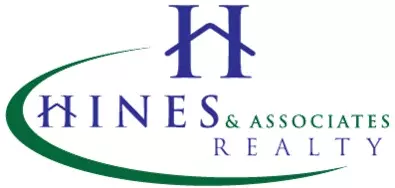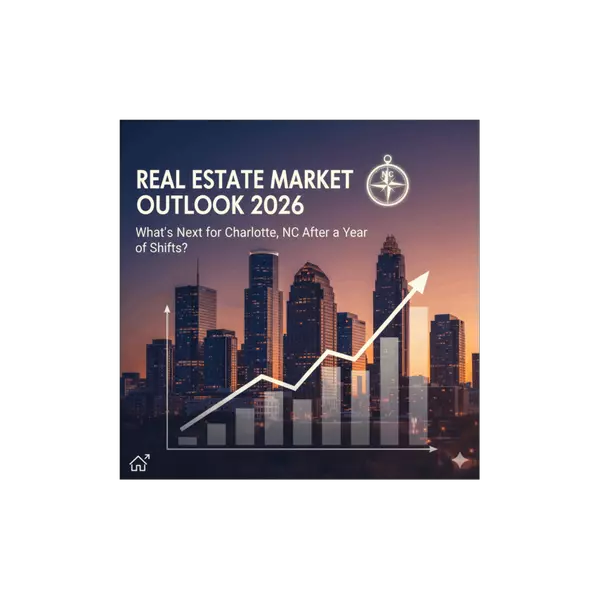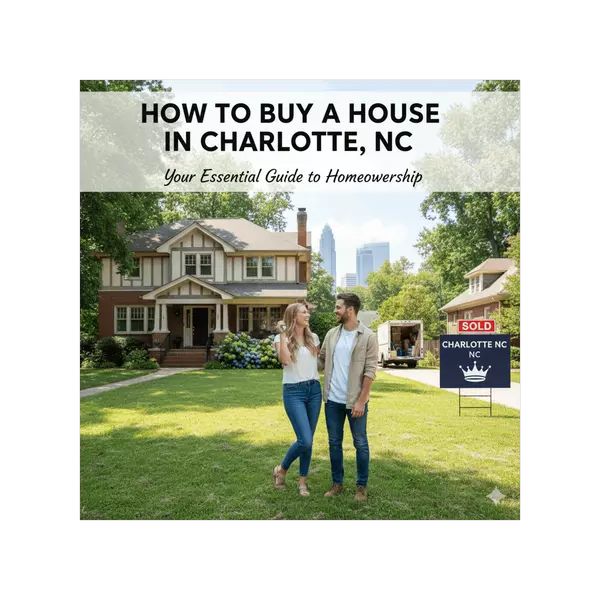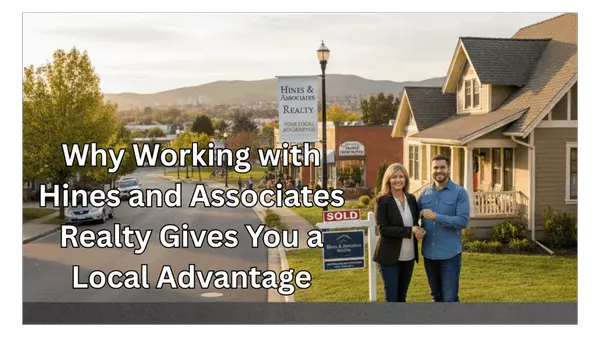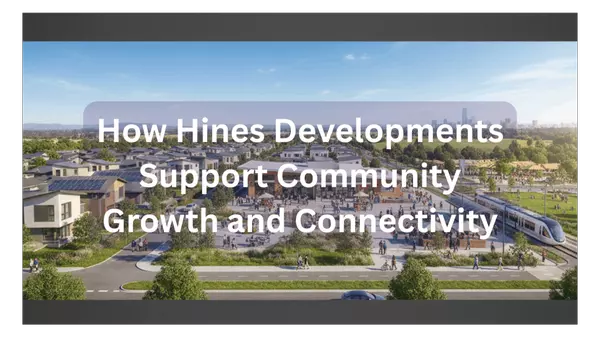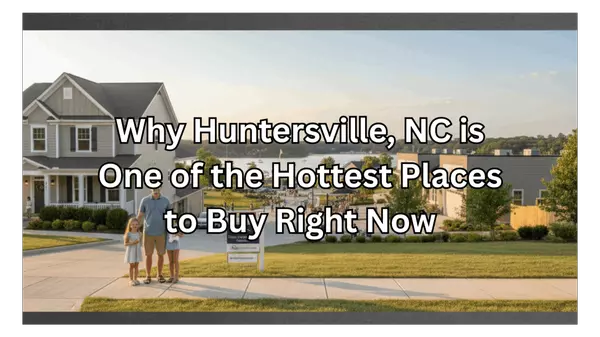What Are the Fastest-Growing Neighborhoods in Charlotte?
Charlotte, North Carolina, has emerged as one of the fastest-growing cities in the United States, and its explosive growth is reshaping neighborhoods across the metropolitan area. As the second-largest financial center in the country and home to a thriving tech scene, Charlotte continues to attract young professionals, families, and retirees seeking opportunity and quality of life. Several neighborhoods stand out as epicenters of this transformation, each offering unique characteristics while contributing to the city's dynamic evolution.
South End: The Urban Renaissance
South End has become synonymous with Charlotte's urban revival, transforming from an industrial corridor into the city's most vibrant mixed-use neighborhood. Located just south of Uptown, this neighborhood exemplifies transit-oriented development done right, anchored by the LYNX Blue Line light rail that provides seamless access to the city center.
The transformation of South End began in earnest during the early 2000s, but the pace of development has accelerated dramatically over the past decade. Former warehouse spaces now house trendy breweries, farm-to-table restaurants, and art galleries that draw crowds from across the city. The neighborhood's walkable streets are lined with modern mid-rise apartments, condominiums, and mixed-use buildings that combine retail, office, and residential spaces.
What makes South End particularly attractive to millennials and young professionals is its emphasis on lifestyle and convenience. Residents can walk to dozens of craft breweries, boutique fitness studios, coffee shops, and restaurants without ever getting in a car. The Rail Trail, a greenway that runs through the heart of the neighborhood, provides a pedestrian and cycling corridor that connects various districts and has become a social hub in its own right.
Development shows no signs of slowing down in South End. Major projects continue to add density and amenities, including upscale apartment towers, hotels, and office buildings. The neighborhood's success has made it a model for urban development throughout Charlotte, though it has also raised concerns about affordability and displacement as property values continue to climb.
Interested in South End real estate opportunities? Contact us at Charlotte NC Real Estate Source to explore available properties in this dynamic neighborhood.
NoDa: Where Art Meets Growth
The North Davidson Arts District, affectionately known as NoDa, offers a completely different flavor of growth. While South End attracts those seeking sleek urban living, NoDa has maintained its bohemian character even as development transforms its landscape. This neighborhood, located northeast of Uptown, has long been Charlotte's artistic heart, and its evolution reflects a delicate balance between preservation and progress.
NoDa's identity is rooted in its historic mill village origins and its emergence as an arts enclave in the 1990s. The neighborhood's distinctive character comes from its collection of renovated mill houses, colorful murals, independent galleries, live music venues, and eclectic restaurants. Unlike the corporate feel that can sometimes characterize other growing areas, NoDa has retained a grassroots authenticity that resonates with artists, musicians, and those seeking community over convenience.
Recent development in NoDa has focused on adaptive reuse and thoughtful infill projects that respect the neighborhood's existing character. New apartment buildings incorporate street-level retail spaces that house locally-owned businesses, while developers have worked to preserve historic structures wherever possible. The extension of the LYNX Blue Line to NoDa has catalyzed new investment, but community activists and the neighborhood's strong identity have helped ensure that growth doesn't erase what makes the area special.
The challenge for NoDa moving forward is maintaining its artistic soul while accommodating the housing demand that comes with increased accessibility and popularity. The neighborhood association has been active in shaping development policies that encourage affordability and cultural preservation alongside economic growth.
Ballantyne: Suburban Excellence Redefined
While South End and NoDa represent urban growth, Ballantyne demonstrates how suburban neighborhoods are evolving to meet changing expectations. Located in the southern reaches of Charlotte, Ballantyne has transformed from a master-planned community into a true mixed-use suburban center that rivals many small cities.
Ballantyne's growth has been driven by its appeal to families and professionals seeking suburban amenities with urban conveniences. The neighborhood boasts highly-rated schools, extensive parks and greenways, upscale shopping at Ballantyne Village and Stonecrest, and a concentration of corporate offices that make it a regional employment hub. Major employers, including healthcare systems, financial services firms, and technology companies, have established significant presences in the area.
What distinguishes Ballantyne from traditional suburbs is its emphasis on walkability and mixed-use development within distinct village centers. Rather than endless residential subdivisions separated from commercial areas, Ballantyne has created pockets where residents can walk to restaurants, shops, and entertainment venues. The neighborhood's investment in parks, trails, and community gathering spaces has created a strong sense of place that keeps residents engaged locally rather than constantly commuting to other parts of Charlotte.
Recent development projects in Ballantyne have focused on adding density and variety to the housing stock, including townhomes, condominiums, and upscale apartments alongside single-family homes. The area continues to attract significant retail and restaurant investment, with new concepts viewing Ballantyne as essential to their Charlotte strategy. As the neighborhood matures, it's becoming a model for how suburbs can evolve to be more sustainable, connected, and community-oriented.
Ready to find your dream home in Ballantyne or any of Charlotte's thriving neighborhoods? Visit Charlotte NC Real Estate Source for expert guidance and the latest listings.
The Ripple Effect of Development
The rapid growth in these neighborhoods reflects broader trends reshaping Charlotte. Development projects across the city are increasingly emphasizing walkability, transit access, and mixed-use design principles. The success of neighborhoods like South End has encouraged developers and city planners to rethink how Charlotte grows, moving away from car-dependent sprawl toward more sustainable, connected communities.
However, this growth comes with challenges. Rising property values and rents have raised concerns about affordability and displacement, particularly in historically working-class neighborhoods experiencing gentrification. The City of Charlotte has responded with various affordable housing initiatives, but advocates argue more aggressive measures are needed to ensure Charlotte's growth benefits all residents.
Infrastructure improvements, particularly transit expansion, continue to drive neighborhood transformation. The LYNX light rail system has proven to be a powerful catalyst for development, and future extensions will likely create new growth corridors. Meanwhile, investments in greenways, bike lanes, and pedestrian infrastructure are connecting neighborhoods and making car-free living more viable.
Looking Ahead
Charlotte's fastest-growing neighborhoods showcase different visions of urban and suburban life, but they share common themes: connectivity, walkability, and community engagement. As Charlotte continues its upward trajectory, these neighborhoods will serve as templates for future development while continuing to evolve themselves. The city's challenge will be managing growth in ways that preserve neighborhood character, promote affordability, and ensure that Charlotte's expansion creates opportunity for all its residents, not just those who can afford to live in the hottest markets.
Whether you're drawn to the urban energy of South End, the artistic vibe of NoDa, or the family-friendly amenities of Ballantyne, Charlotte's diverse neighborhoods offer something for everyone. Understanding these growth patterns is essential for anyone considering a move to the Queen City or looking to invest in its flourishing real estate market.
Ready to Make Your Move?
Charlotte's real estate market is dynamic and competitive. Whether you're a first-time homebuyer, looking to upgrade, or interested in investment opportunities, having the right guidance makes all the difference. Contact Charlotte NC Real Estate Source today to connect with experienced local agents who know these neighborhoods inside and out. Let us help you find the perfect home in Charlotte's most exciting communities.
Categories
Recent Posts
